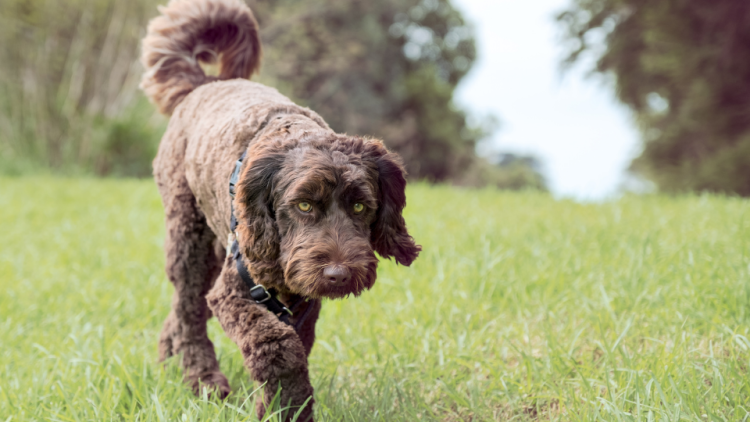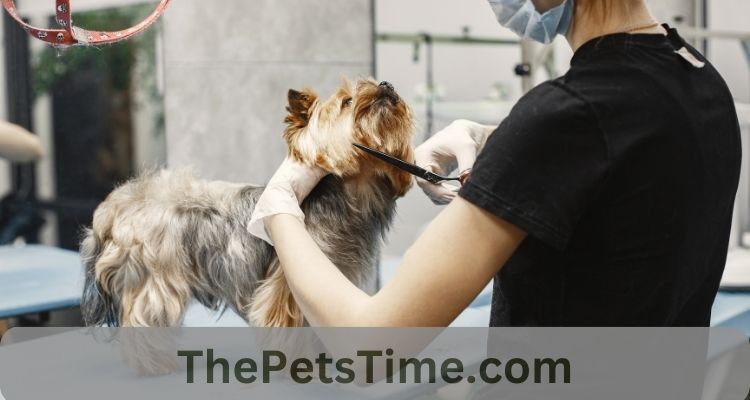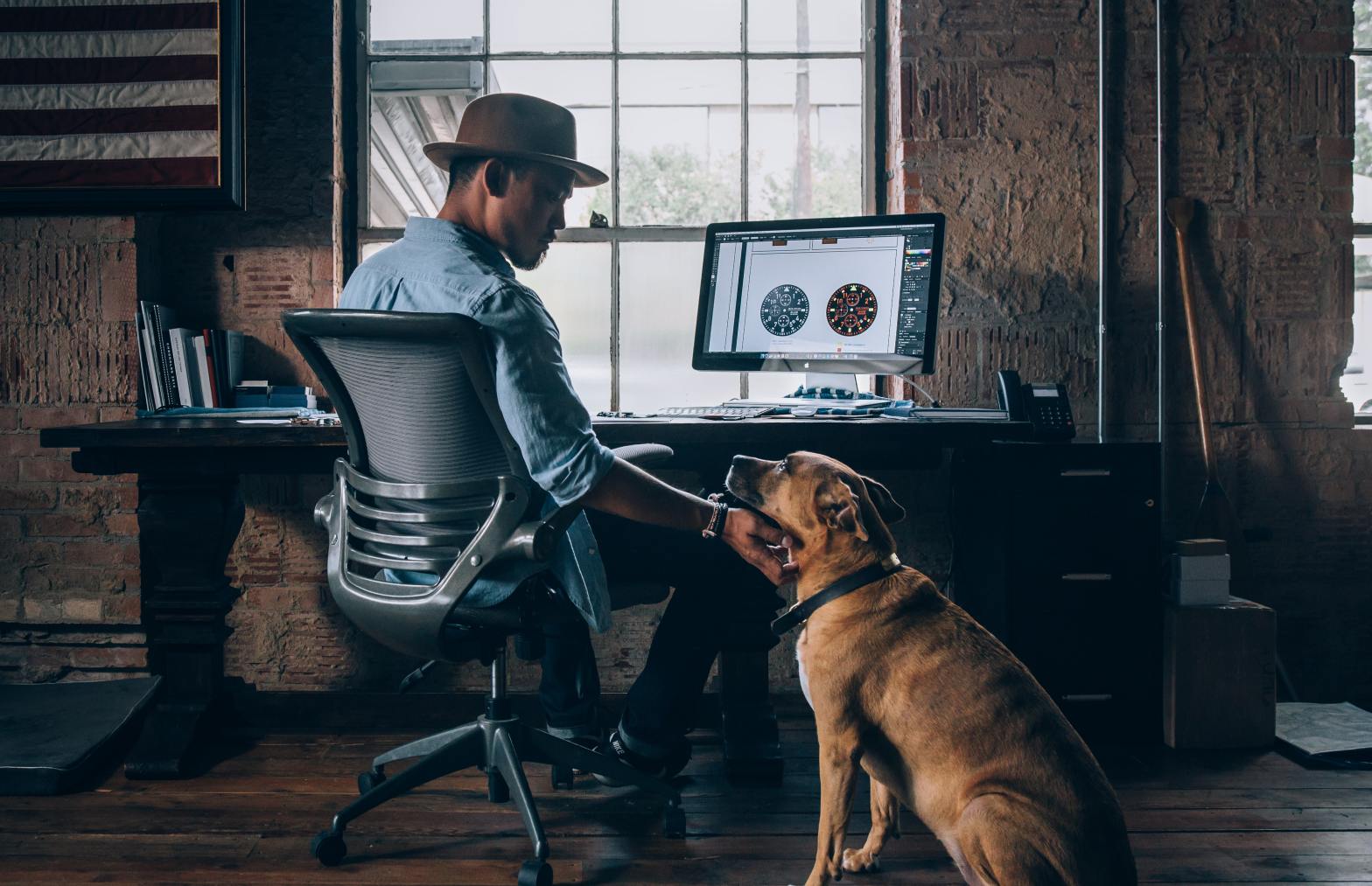If you’re a parent, you may be curious about the maximum size a Labradoodle can reach. The first decade of a Labradoodle’s life is marked by rapid development; the dog may appear to be permanently young. As a general rule of thumb, Adult Chocolate Labradoodle reaches 97% of their adult body weight by 12 months.
We conducted an extensive study on “When is a Labradoodle Full Grown?” if you’re interested in the details. By the time your Labradoodle is 18 weeks old, you should have seen a doubling of its initial weight. But their final size and age at which they stop growing are conditional on many factors.
What is the maximum size for a Labradoodle?
A dog’s growth to maturity is typically more rapid the smaller the breed. In other words, a small Labradoodle can mature into an adult of full size in just a single year. However, a giant Adult Chocolate Labradoodle can take up to 18 months.
Your Labradoodle will develop normally regardless of its coat color. So long as they remain in the same size class, chocolate Labradoodle puppies will mature to around the same size as their black counterparts.
Full Labradoodle Coat
One of the many appealing features of the Labradoodle is its curly, fluffy coat. Labradoodle puppies may all look similar now, but their coats may develop differently as adults. There are three possible coat types for an adult Chocolate Labradoodle:
Wool: light coarseness, extreme curliness, and minimal shedding
Fleece: The hair is silky, rarely sheds, and may be curled in a variety of ways
Hair: Granular and dense, with some shedding
The Labrador parent most strongly influenced the hair texture and thickness. However, the wool variety most closely resembles the original Poodle breeder. If you want a puppy with a wool or fleece coat, you should go for an f1b Labradoodle or a later generation.
How Does a Labradoodle Look Like?
Labradoodles come in various sizes and coat colors in addition to the two standard variations. Labradoodles come in various coat colors and patterns, including solids, partis, and even rarer patterns like phantom and sable.
Aging can cause some Labradoodle puppies to lose their vibrant coat colors. Poodle genes are responsible for this thinning. Most frequently, this occurs in Labradoodle puppies with darker coats. A black puppy’s coat can turn silver, and a brown puppy’s coat to lighten to tan as they age. Dogs with lighter coat colors are less likely to show any fading.
Temperament of an Adult Labradoodle
What a puppy will become as an adult is completely unpredictable. A dog’s personality develops as a result of its upbringing and the training they receive. The way you bring up your dog will have lasting effects. What, though, is the typical temperament of a full-grown Labradoodle?
Labradoodles are well-known for their warm personalities and energetic spirit. Your adorable Labradoodle puppy will likely mature into an equally adorable adult dog, especially if you start early with training and socialization. Generally speaking, Labradoodles thrive in households with active adults and children of various ages. They aren’t suited to households where they spend long periods alone or where they get insufficient physical activity. An adult Labradoodle can exhibit several undesirable behaviors if not adequately exercised and mentally stimulated.
How Many Years Can You Expect To Spend With Your Labradoodle?
The longevity of a dog is affected by several variables, including breed, diet, environment, way of life, and preventative veterinarian care. In general, a Labradoodle will live between 12 and 14 years. However, some breeders believe that this age of death can be increased to 16 years. Many Labradoodles will be with you for over a decade, sometimes even into their teenage years.
Labradoodle Health
Labradoodles may develop the same diseases as one or both of their parent breeds. A responsible breeder will perform health checks on their dogs before mating them. Prospective buyers should still be aware of the most typical issues, so they can spot warning signs sooner rather than later.
How Can I Guarantee The Well-Being Of My Labradoodle?
We want the best for our Labradoodle puppies because they are beloved parts of our family. Taking your Labradoodle in for frequent checkups at the vet is a great way to ensure their health and well-being. Examining your Labradoodle regularly gives your vet a chance to look for signs of illness before they become serious, which is why it’s important to prioritize preventative care over therapy. Core vaccinations, such as Rabies, must be given numerous times throughout your puppy’s first six months of life, and then yearly checkups are recommended thereafter.
Labradoodles are at increased risk for various hereditary diseases, such as Addison’s disease, hypothyroidism, and eye issues, because they are the offspring of two purebred dog breeds. Similar to their ancestors, Labradoodles have an increased risk of hip dysplasia, an orthopedic disorder caused by abnormal hip joint development. The good news is that hip dysplasia can be surgically corrected, preventing the pain, limited movement, and lameness that can result from untreated cases.
References:
1: Minimal shedding of the glycocalyx layer during abdominal hysterectomy
Publishing date: 22 August 2017
https://doi.org/10.1186/s12871-017-0391-6
2: Genetic analysis of the modern Australian labradoodle dog breed reveals an excess of the poodle genome
Publishing date: September 10, 2020
https://doi.org/10.1371/journal.pgen.1008956
3: A confident parent breeds a confident child’: Understanding the experience and needs of parents whose children will transition from paediatric to adult care
Publishing date: June 30, 2020
https://doi.org/10.1177%2F1367493520936422







